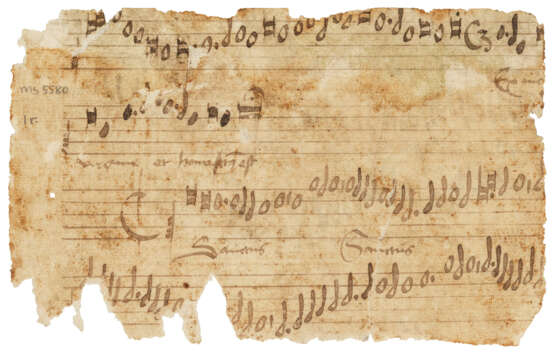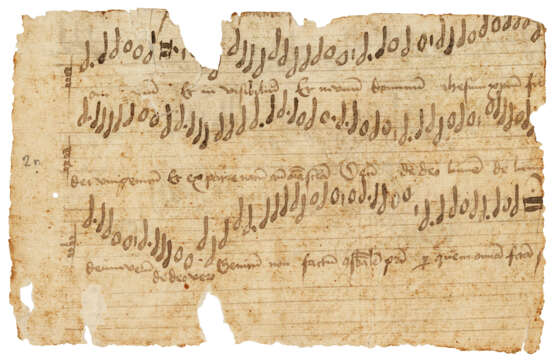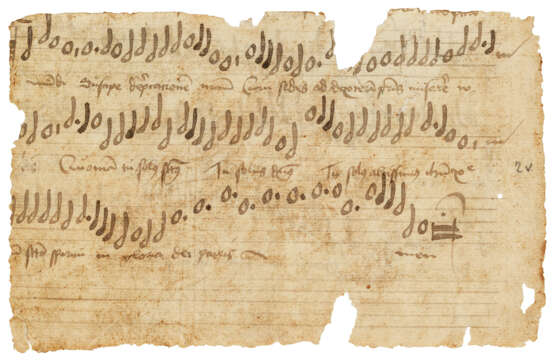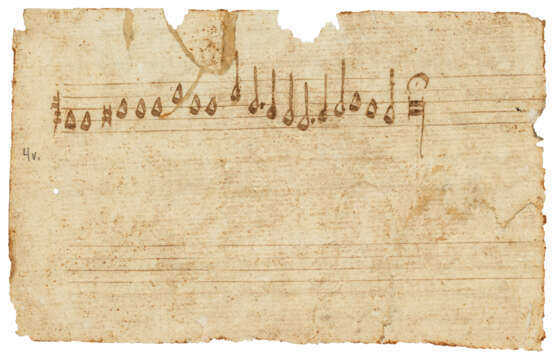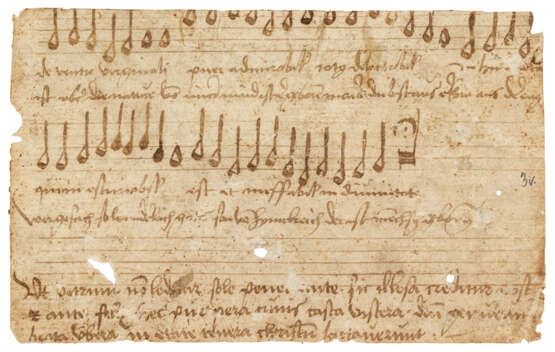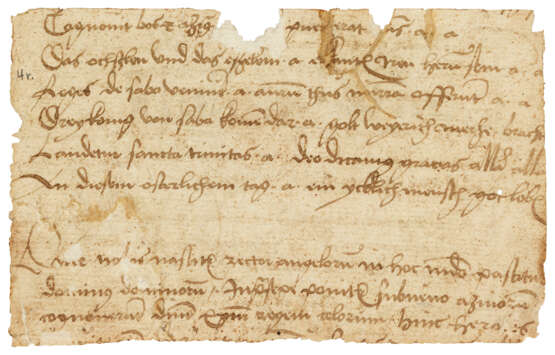ID 1053178
Lot 64 | A polyphonic Credo for Discant and Tenor
Valeur estimée
£ 2 000 – 3 000
Four fragments from a musical manuscript, in Latin and Eastern Upper German, on paper [Bayern-Salzburg, 2nd half 15th or early 16th century]
An early Renaissance polyphonic setting of the Credo, and German Christmas carols.
4 fragments, each c.110 x 180mm, each fragment foliated in modern pencil 1r-4v, the text in an angular German Gothic cursive, the polyphonic music in 5-line staves in mensural notation, the watermark a bull's head (frayed and stained at edges, used as binding fragments).
Provenance:
(1) Bloomsbury Auctions, 7 December 2016, lot 25.
(2) Schøyen Collection, MS 5580.
Texts and music:
ff.1r-v, 2r-v and 3v contain the Credo in polyphonic mensural notation, all from a single setting. The two recto parts present the beginning and middle of a Discantus part; while the two versos the beginning and end of a Tenor part.
Other texts present in the fragments are: Heinrich Seuse (1296-1366), 'In dulci jubilo wir singen und sein fro', bilingual Christmas carol (without music) by the German Dominican author and mystic's Das Büchlein der Wahrheit, written c.1328-1330. The oldest manuscript of this carol is Codex 1305, Leipzig University library, which dates to c.1400. It was first printed in Joseph Klug: Geistliche Lieder, 1533. Martin Luther possibly added another verse in 1545. Michael Praetorius made several settings of it, as did J. S. Bach: as a chorale BWV 368, as a double canon in Orgelbüchlein BWV 608, and also used the opening of the theme in the choral preludes BWV 703 and 704. Puer natus in Bethlehem is a carol that can be traced back to the 13th century and was also used by J. S. Bach in his Orgelbüchlein BWV 608. Puer nobis nascitur was first known in the German Moosburg Gradual from 1360 (München, UB folio 156). Finally Dies est laetitiae (Noël, Noël, this is the joyful day), a motet for Christmas; and an unidentified Christmas hymn in mensural notation, without text.
Identification of the texts and localisation of the present fragments were made by Dr Jeffrey J. Dean and Professor Nigel F. Palmer.
| Lieu d'origine: | Allemagne |
|---|---|
| Catégorie maison de vente aux enchères: | Manuscrits médiévaux et de la Renaissance |
| Lieu d'origine: | Allemagne |
|---|---|
| Catégorie maison de vente aux enchères: | Manuscrits médiévaux et de la Renaissance |
| Adresse de l'enchère |
CHRISTIE'S 8 King Street, St. James's SW1Y 6QT London Royaume-Uni | ||||||
|---|---|---|---|---|---|---|---|
| Aperçu |
| ||||||
| Téléphone | +44 (0)20 7839 9060 | ||||||
| Commission | see on Website | ||||||
| Conditions d'utilisation | Conditions d'utilisation |
